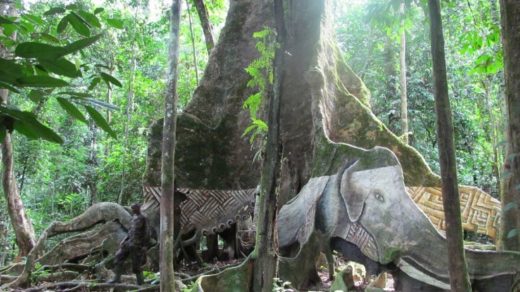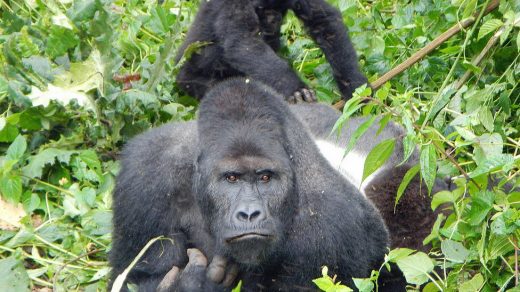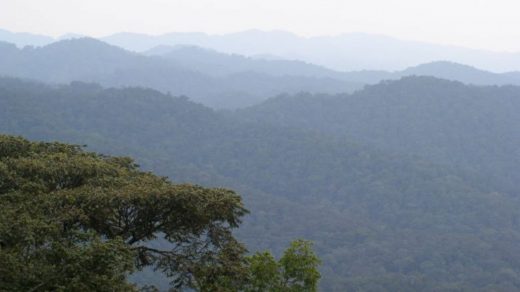The western lowland gorilla (Gorilla gorilla gorilla) is one of the two subspecies of western gorilla. Just like the other subspecies, it is listed as Critically Endangered by IUCN.
The western lowland gorilla does not grow as big as the other three subspecies of gorilla. It is by far the most commonly kept subspecies of gorilla in zoos all over the world.
Distribution
The western lowland gorilla lives in central Africa; in the countries Angola, Cameroon, Central African Republic, Republic of the Congo, Democratic Republic of the Congo, Equatorial Guinea, and Gabon.
The Republic of Congo is currently considered to host a majority of the wild western lowland gorillas, and Congo´s large swamp forests are especially important for this subspecies.
Habitat
The western lowland gorillas live in primary and secondary forests and lowland swamplands. They are found in many different habitats, including rainforest, montane forest, lowland tropical forest, swamp forest, brush, secondary vegetation, clearings, forest edges, abandoned farming fields, and riverine forests.
Their range extend from sea level up to circa 1,300 metres.
Conservation
Some of the main threats against the western lowland gorilla are habitat loss, hunt for bushmeat and serious diseases, such as ebola. The illegal pet trade is also a problem.
Logging can seriously damage or even destroy gorilla habitat, but there are also examples where careful logging have resulted in increased herbaceous vegetation for the gorillas to eat. Farming, livestock grazing and expanding human settlements are often more problematic, as they tend to permanently turn gorilla habitat into non-gorilla habitat.
According to a gorilla census carried out in the 1980s, the gorilla population in equatorial Africa was comprised of roughly 100,000 individuals. Due to poaching and disease, researchers later adjusted that number down to less than half.
Surveys conducted by the Wildlife Conservation Society in 2006-2007 found about 125,000 previously unreported gorillas living in swampy forests in the Lake Télé Community Reserve and in the nearby dryland forests in the Republic of the Congo.
One of the main international organizations working with western lowland gorilla conservation in the Republic of the Congo is The Wildlife Conservation Society (WCS). For a long time, they have been working together with local communities to improve the situation for the gorillas. Among other things, this work includes helping local populations find other sources of protein, and promoting the enforcement of anti-poaching laws.
Ebola in the Republic of the Congo
In 2002-2003, the gorillas living in Lossi sanctuary suffered an outbreak of ebola. In 2004, an ebola outbreak occurred among gorillas in the Lokoué forest clearing in Odzala-Kokoua National Park, and it also reached the Maya Nord population 52 km north-west of Lokoué.
The ebola outbreak in the Lokoué forest clearing had a stronger negative impact on gorillas living in groups and on adult female gorillas. As a result, the proportion of solitary males were higher after the outbreak than before. Before the outbreak, this gorilla population contain 377 individuals. Two years after the outbreak, only 38 gorillas remained. Six years after the outbreak, there were 40 gorillas. The population is currently recovering, but progress is slow.
The ebola outbreak in the Maya Nord population reduced it from 400 individuals to considerably fewer, although exact numbers are not known.
These outbreaks of ebola in the Republic of the Congo prompted the IUCN to change the status of the subspecies from Endangered to Critically Endangered.
Bushmeat
The western lowland gorillas are just one of many wild species and subspecies hunted illegally to provide meat for human consumption.
Commercial logging and road creation in the north-eastern part of the Republic of the Congo have increased the local demand for bushmeat and been harmful to animals such as western lowland gorilla, chimpanzees, and forest elephants. The improved infrastructure has also made it easier to reach the animals and transport the meat to other parts of the region.


